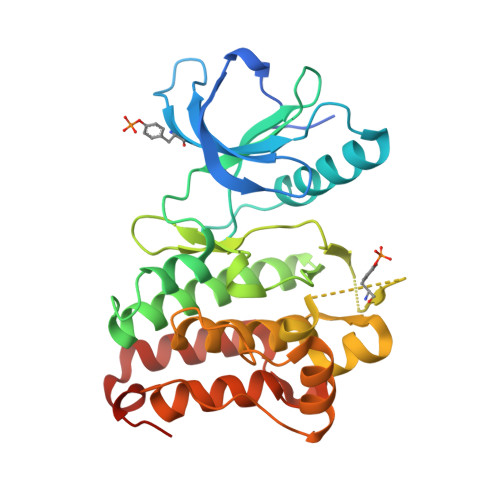A Chemical-Genetic Approach to Generate Selective Covalent Inhibitors of Protein Kinases.
Kung, A., Schimpl, M., Ekanayake, A., Chen, Y.C., Overman, R., Zhang, C.(2017) ACS Chem Biol 12: 1499-1503
- PubMed: 28459525
- DOI: https://doi.org/10.1021/acschembio.6b01083
- Primary Citation of Related Structures:
5MJA, 5MJB - PubMed Abstract:
Although a previously developed bump-hole approach has proven powerful in generating specific inhibitors for mapping functions of protein kinases, its application is limited by the intolerance of the large-to-small mutation by certain kinases and the inability to control two kinases separately in the same cells. Herein, we describe the development of an alternative chemical-genetic approach to overcome these limitations. Our approach features the use of an engineered cysteine residue at a particular position as a reactive feature to sensitize a kinase of interest to selective covalent blockade by electrophilic inhibitors and is thus termed the Ele-Cys approach. We successfully applied the Ele-Cys approach to identify selective covalent inhibitors of a receptor tyrosine kinase EphB1 and solved cocrystal structures to determine the mode of covalent binding. Importantly, the Ele-Cys and bump-hole approaches afforded orthogonal inhibition of two distinct kinases in the cell, opening the door to their combined use in the study of multikinase signaling pathways.
Organizational Affiliation:
Discovery Sciences, Innovative Medicines and Early Development Biotech Unit, AstraZeneca , Building 310, Cambridge Science Park, Milton Road, Cambridge, CB4 0WG, United Kingdom.

















